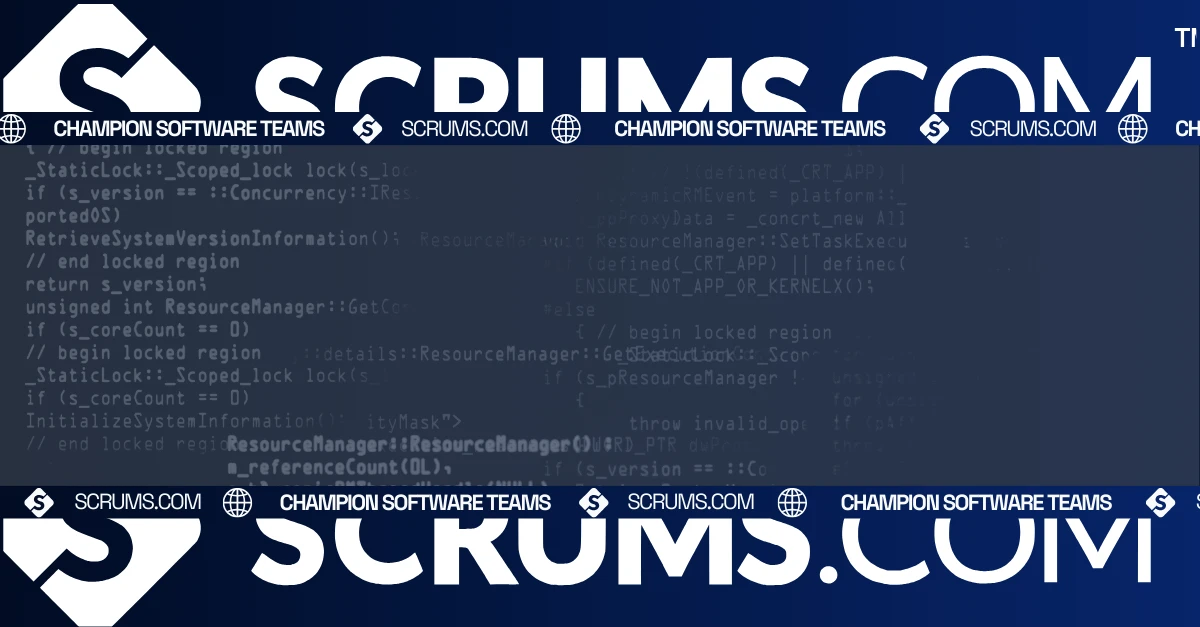pgAdmin: PostgreSQL Tool
Introduction to pgAdmin
pgAdmin is a powerful open-source administration and management tool for PostgreSQL, one of the most advanced open-source relational database systems. It provides a comprehensive interface for database administrators, developers, and software development companies to manage PostgreSQL databases efficiently. For business owners and CTOs, pgAdmin is a strategic tool that enhances database management capabilities, supports data-driven decision-making, and ensures optimal performance.
What is pgAdmin?
pgAdmin is an open-source graphical user interface (GUI) management tool for PostgreSQL databases. Initially released in 1998, pgAdmin has evolved into one of the most popular tools for managing PostgreSQL databases, offering a range of features that cater to both novice and experienced database administrators.
pgAdmin addresses the challenge of managing complex PostgreSQL databases by providing an intuitive interface and a suite of powerful tools for database development, management, and optimization. It is particularly effective in environments that prioritize open-source solutions, database automation, and robust data management practices, such as SaaS applications, cloud-native environments, and data-driven enterprises.
Core Features and Functionalities
User-Friendly Interface: pgAdmin provides an intuitive web-based and desktop interface that simplifies database management, offering a range of tools for interacting with PostgreSQL databases.
SQL Query Tool: A powerful SQL editor with syntax highlighting, code completion, and error detection that allows users to write, execute, and debug SQL queries efficiently.
Data Modeling and Visualization: pgAdmin includes features for visualizing database schemas, managing table relationships, and designing databases, helping teams understand complex data structures.
Server Management: Allows users to manage multiple PostgreSQL servers from a single interface, providing comprehensive tools for server configuration, monitoring, and management.
Backup and Restore: Supports robust backup and restore functionalities, including full, incremental, and scheduled backups, ensuring data integrity and recovery.
Monitoring and Maintenance Tools: Provides performance monitoring tools like Query Tool, Activity Viewer, and Server Dashboard, enabling teams to optimize database performance and resolve issues quickly.
Security and Access Control: pgAdmin offers robust security features, including role-based access control and SSL encryption, to ensure secure database management.
Benefits for Businesses and Development Teams
For Businesses:
- Cost Efficiency: As an open-source tool, pgAdmin offers a cost-effective solution for managing PostgreSQL databases, reducing the need for expensive proprietary software.
- Improved Data Management: With comprehensive tools for database administration, monitoring, and optimization, pgAdmin ensures that data is managed effectively and securely.
- Enhanced Security and Compliance: pgAdmin's advanced security features help businesses maintain compliance with industry standards and protect sensitive data from unauthorized access.
- Accelerated Time to Market: By simplifying database management and development, pgAdmin enables businesses to shorten development cycles and bring products to market faster.
For Developers:
- Advanced SQL Development: pgAdmin's SQL Query Tool, with features like syntax highlighting and code completion, helps developers write, test, and optimize SQL queries quickly.
- Multi-Server Management: Allows developers to manage multiple PostgreSQL instances from a single interface, providing flexibility and control over database environments.
- Integration with DevOps Workflows: Works seamlessly with CI/CD tools and DevOps practices, supporting automated deployments, continuous integration, and efficient database management.
- Customization and Extensibility: The open-source nature of pgAdmin allows developers to customize and extend its functionality to meet specific needs and integrate with other tools.
Use Cases and Applications
pgAdmin is used across various industries and development environments:
Database Development and Administration: Provides a centralized platform for managing PostgreSQL databases, reducing complexity and increasing efficiency.
Data Analysis and Reporting: Offers robust data analysis and reporting tools, making it easy for teams to generate insights and make data-driven decisions.
DevOps and CI/CD Integration: Integrates with CI/CD tools like Jenkins, GitHub Actions, and GitLab CI, enabling automated database deployments and updates.
Industry-Specific Examples:
- Fintech: Ensures secure and compliant management of financial data, supporting real-time analysis and decision-making.
- Healthcare: Facilitates the management of sensitive healthcare data, ensuring compliance with regulations like HIPAA.
- E-commerce: Enhances the performance of e-commerce platforms by optimizing database queries and managing large datasets effectively.
Integration Capabilities and Ecosystem
pgAdmin provides robust integration capabilities with various tools and platforms:
- Compatibility with Popular Platforms: Integrates seamlessly with cloud platforms like AWS, Microsoft Azure, Google Cloud, and others, enabling cloud-based PostgreSQL database management.
- Integration with DevOps Tools: Works well with DevOps tools like Jenkins, GitHub Actions, GitLab CI, and Docker, supporting automated database deployments and updates.
- API and Command-Line Interface: pgAdmin offers an API and command-line interface (CLI) for automation, custom scripting, and enhanced integration with existing systems and workflows.
- Extensions and Plugins: Supports third-party extensions and plugins to expand its functionality and adapt to specific use cases, allowing teams to tailor pgAdmin to their needs.
Comparison with Alternatives
pgAdmin competes with other database management tools like DBeaver, HeidiSQL, and DataGrip.
- Pros: Open-source, user-friendly interface, comprehensive feature set for PostgreSQL, robust community support, and frequent updates.
- Cons: Primarily focused on PostgreSQL, which may limit its use for managing other types of databases.
- Cost Considerations: pgAdmin is free to use, making it a cost-effective choice for businesses and teams of all sizes.
- When to Choose pgAdmin: Opt for pgAdmin if you need a dedicated, feature-rich tool for managing PostgreSQL databases with robust security, customization, and integration capabilities.
Getting Started with pgAdmin
Here’s a step-by-step guide for business decision-makers and developers:
- Download and Install pgAdmin: Visit the pgAdmin website to download the appropriate version for your operating system (Windows, macOS, Linux) and install it.
- Connect to PostgreSQL Databases: Use pgAdmin to connect to local or remote PostgreSQL databases, ensuring secure authentication and access control.
- Explore SQL Query Tool and Data Modeling Features: Familiarize yourself with the SQL Query Tool and data modeling features to manage databases and write efficient queries.
- Set Up Monitoring and Maintenance Tools: Use pgAdmin’s monitoring and maintenance tools, such as the Server Dashboard and Activity Viewer, to monitor performance and maintain databases.
- Automate Tasks with API and CLI: Utilize pgAdmin's API and command-line interface (CLI) to automate routine tasks like backups, data migration, and query execution.
- Integrate with DevOps Workflows: Connect pgAdmin with CI/CD tools like Jenkins, GitHub Actions, or GitLab CI for automated database deployment and management.
Refer to pgAdmin Documentation for tutorials, webinars, and comprehensive guides.
Related Tools and Resources
- pgAdmin vs. DBeaver: Compare the features, pricing, and benefits of pgAdmin and DBeaver for PostgreSQL management.
- Integrating pgAdmin with CI/CD Tools: Learn how to integrate pgAdmin with Jenkins, GitHub Actions, and other DevOps tools.
- pgAdmin documentation: pgAdmin documentation for comprehensive guides and tutorials.
Explore Related Software Development Tools
FAQs
We've got you covered, these are some common questions we receive. Not seeing the answer to something?...
pgAdmin is an open-source tool and is free to use, making it a cost-effective solution for PostgreSQL database management.
pgAdmin simplifies database management, enhances productivity, and integrates with DevOps tools, making it ideal for modern software development.
Yes, pgAdmin integrates seamlessly with cloud databases on AWS, Microsoft Azure, Google Cloud, and more.
pgAdmin provides a powerful SQL Query Tool, a visual query builder, and debugging tools to optimize SQL development.
pgAdmin is primarily designed for PostgreSQL and may have limited functionality for other database systems.
pgAdmin provides extensive documentation, tutorials, community forums, and customer support to assist users.
Explore Software Development Blogs
The most recent trends and insights to expand your software development knowledge.






